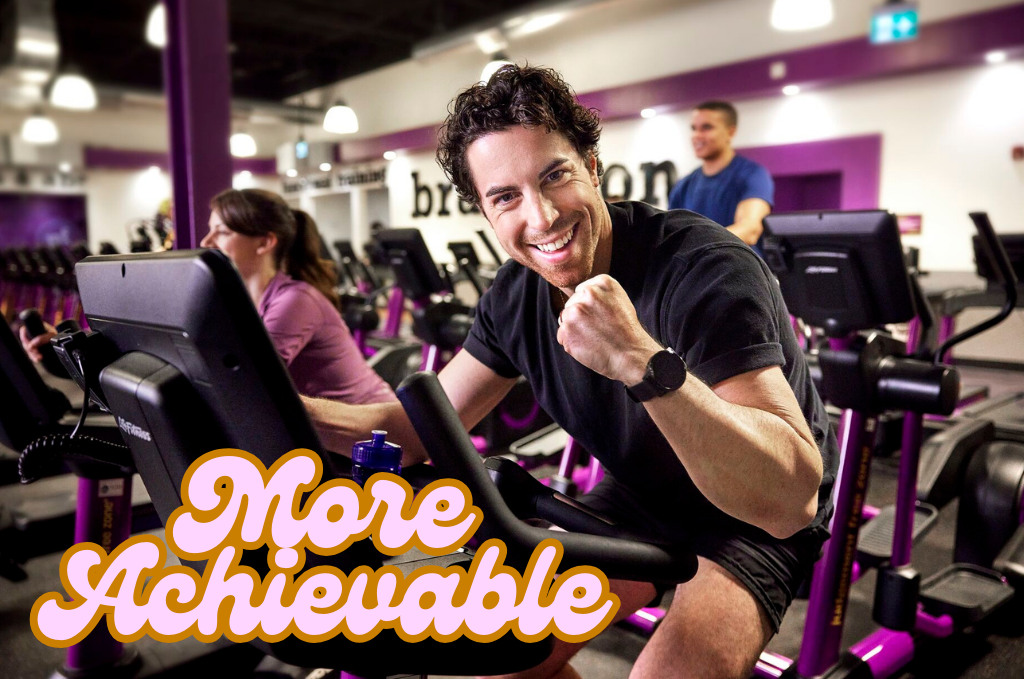Hello people! Do you, as a gym owner, need help determining whether owning your business’s building is financially prudent?
Purchasing the building where your gym is situated is one of many things that pop into your mind when starting or even managing a business in the fitness industry. Because, let’s face it, leasing a space always seems more sensible, whether you’re just getting your feet wet or opening a couple of new locations.
However, there are so many advantages to owning the building where your gym is located, and these can go a long way in fixing or boosting your business, increasing its versatility for operations and overall stability.
Let’s dive in!
Table of Contents
More Importantly Achievable

One of the most important benefits of owning your building is accumulating equity. Leasing a property has been described as paying someone else’s house mortgage with no hope of returning the money spent. However, when you own the building, the monthly costs accrue to building ownership, which enhances the value of the real estate investment.
Investopedia claims that real estate property usually increases its value over time, and property ownership can be a wise approach to amass wealth.
For instance, according to the studies giving the performance overview for the last decade, commercial property investing in the USA has a potential return rate of 8% to 12% annually. In some situations, as a gym owner, you might sell it and earn good money by either selling the property, renting it out or even using it to secure more investment opportunities.
Real-World Example:
For instance, C24 Hour Fitness, a health club operator, shifted from leasing to owning its facilities. The company managed to cut operating expenses by eliminating rental fees and getting more autonomy regarding property management.
The fact that capital was saved made it possible for the brand to invest it back into bettering its facilities to recruit more members.
Housing Inspection and Control of Rent and Other Future Charges
Rent escalation is one of the most uncertain and concerning factors in the gym’s premises lease. It is common to find new business tenancy agreements containing clauses that give the landlord the right to raise rent after two or three years.
This might prove unprofitable for gym owners since most of them work with very slim profit margins. If you are the building owner, you must find out how much it will cost you.
They also ensure that your monthly payment is fixed for the entire period so you can pay once a month.It is also more manageable when it comes to planning for growth, the need to acquire equipment, and expanding capacity.
Furthermore, with ownership, gym owners can decide on the changes and developments in the structure of the building without consulting the landlord, making adjustments that would improve the aesthetics of the facility and membership atmosphere and hence increase its member turnover.
Supporting Stat:
The NAR’s 2023 survey showed that while 61% of the commercial real estate owners experienced consistent or increasing property values, year on year, 28% of commercial property owners leased commercial properties. This means the gym owners who own their gym facilities are better positioned to benefit from a higher property value, which means money.
Tax Benefits and Deductions
Purchasing commercial property offers especially significant tax benefits for gym owners, substantially increasing their overall earnings. The owners can consider Many expenses related to an investment property for the deduction, including mortgage interest, property taxes, depreciation, and repair expenses.
Depreciation is an item on this list that is likely to bring down the amount of taxes paid. Real estate, in most cases, increases in value, but the Internal Revenue Service lets property owners write off the wear and tear of the structure annually. Another implication is that you can claim a part of the annual building cost from your taxable earnings.
The IRS permits the depreciation of commercial property over 39 years. This is an added advantage to business people in that they benefit from the money savings in the long run. Such savings can be directed back into the development of the gym business or help reduce other costs and, therefore, make additional profits.
Example:
For instance, if one buys a commercial gym building at the current retail price of $500,000 over 39 years, roughly $12,820 per year can be subtracted from the gross income from depreciation—quite a significant figure in the long run.
The following video explains about Gym Tax Deductions:
More Flexibility in Building Design and Planning
Renovation of a commercial property is another significant disadvantage because most come with several restrictions that will affect the way you can alter its structure to meet the needs of your business venture.
Often, a gym owner is limited by their landlord in making alterations to the contracted space or introducing modifications, be it fixing the layout, overcoming parking issues, or providing extra facilities.
With ownership of the building, the layout of the area can be according to one’s preference, and the addition and removal of structures can be quickly done.
It is possible to develop a layout to suit all your member’s needs, ease your workflow, and reflect the image and brand of your gym. You have ultimate flexibility whether you are increasing the number of workout areas, improving the locker room or fortifying services; this comes from ownership.
Furthermore, it means that gyms in the building can easily accommodate specific types of workouts or members’ individual preferences.
For example
Provisions for a yoga hall, spin hall, or personal training hall can be quite impractical to arrange in a leased facility or in a facility where adequate space is a constraint.
Security and Stability in the Long Term

Last but not least, owning your gym’s building is a long-term jackpot in terms of stability and security. On the other hand, leases may be indefinite. You can be ejected from your premises through the landlords refusing to extend contracts or overly hiking the rent charges, making you leave the business premises or vacate altogether.
This was witnessed during the pandemic when gym owners and other small businesses could not effectively renew contracts as they were evicted from premises associated with the commercial real estate markets, most of which were volatile.
You control how the gym will look in the next couple of years. You do not have to bother with changes in rent or the possibility of being asked to leave an apartment at some point.
All you have to do is keep making those mortgage payments, and it is yours which affords a person much-needed stability. It also means that you do not have to worry about getting a rent hike or your landlord deciding to cash in on the building where you are located.
- Stat Insight: The IBISWorld report, published in 2019, also showed that 53% of gym owners operating from rented premises explained the decline in profitability caused by increasing commercial rents. On the other hand, 77% of those who owned their building said they had better control over their business and felt more secure transacting.
- Bonus: The Most and Least Popular Types of Real Estate Investment
Few gym owners know that owning their building is one way of creating residual income.
If the gym’s area is spacious, you can sublet the extra space to related establishments, including equipment manufacturers, health clinics, or even small stores. This would also be helpful in reducing mortgage payments or improving cash flow in relatively quiet months.
Moreover, should you contemplate growing the business by either increasing the size of the gym or opening others, property ownership gives you a lot of freedom. You might thereafter dispose of the property and use the money to finance other expansion and development exercises or other property investments, thus diversifying or expanding your business.
Example:
Orange Theory Fitness. This well-known fitness franchise has been owning many of its stores instead of leasing, which has allowed it to grow aggressively while keeping operating expenses down.
According to industry guidelines and practices for CPGs, the company currently has direct ownership of about 25% of its total units, which will allow it to expand even more and generate additional passive rental revenue.
Conclusion
In conclusion, purchasing the structure where a gym is located has a number of advantages apart from protection. From establishing long-term goodwill and minimizing costs to taxation benefits, operational flexibility, and securing tenure, owning commercial real estate can help your gym achieve sustainable growth in the long run.
At first, buying a building may seem like cocooning, but the economic, management and strategic benefits make this an attractive proposition for gym owners. Stepping up takes you out of the vulnerability of high rents and exposes you to wealth creation and long-term financial gain.
FAQ
1. Why would it benefit gyms to own the building from which they operate?
Managing the building as a property creates perpetual business profitability and equity accrual.
2. What is a gym-building relationship in terms of profitability?
Owning addresses the high rent cost since most funds can be reinvested and used for expansion.
3. Can gym owners reduce their taxes if they own their property?
Yes, owning has tax benefits on property, depreciation and maintenance.
4. What flexibility is there in owning a gym’s building?
Owners decide on space, do not face limitations, and can only develop activities independently.
5. Should I invest in a gym building or not?
Yes, real estate tends to appreciate that the value of the investment increases over time.




